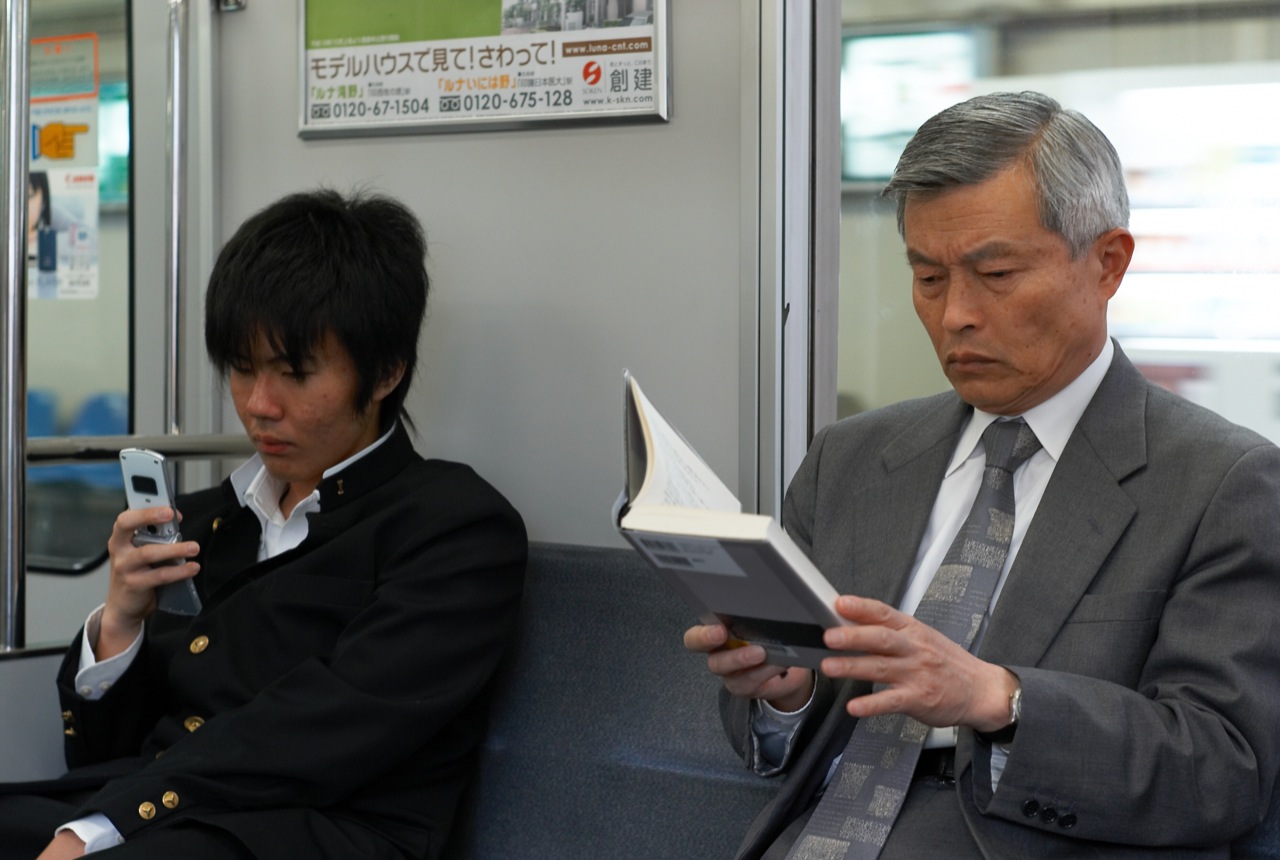
Four of Japan’s top five literary best sellers in 2007 were written on cell phones.
The authors of cell phone novels — associated mostly with women aged 10-29, the Twilight set — were limited by the technology of early smartphones, but that was fine. Limitations create art. Cell phone novels read line-by-line, rarely in paragraphs, and use white space to lend their narratives poetic luster. Here’s an example from takatsu’s Move:
Like a lost soul I swim through insomniac night crowds and stumble into my tiny desolate apartment dropping my frozen suitcase
Narrative precedes concerns like rhyme and meter. If you’re familiar with prose poems, you can think of cell phone novels like poem prose, optimized for a mobile screen. Fans read cell phone novels how they were written, i.e. over long commutes.
They weren’t light reading, though. Stories were “dark, sensational, and sexual.” The first cell phone novel, Deep Love, follows a young woman, Ayu, who turns to sex work to save her dying boyfriend. She dies of HIV. Ayu conveys this all in confidence, so that the line blurs between character, hurriedly outlining her story, and author, pouring themselves into their phone with little filter. Authors describe a personal connection to the content of their narratives — the word we’d use now is “self-insert” — although Deep Love itself was written by a man in his thirties.
(By the way, I had a ton of trouble accessing the classic cell phone novels — Deep Love; I, Girlfriend — because the genre lived and died in Japanese. It originated in 2002, the year of “Hot in Herre” and Die Another Day. I read mostly excerpts from the second-wave Western cell phone novels of 2008, the year of ghost peppers, Bitcoin, Quantum of Solace. Maho iLand, the usual haunt for cell phone novels, remains active and free to read.)
As the cell phone novel climbed in reputation, three basic viewpoints emerged.
- I sure do enjoy reading cell phone novels. (This was mostly the claim of young women, although by 2007 everyone from major publishers to literary critics had gotten a hand on the ball.)
- Cell phone novels will destroy the author and the novel. They’re poisoning the minds of young people ew icky gross.
- Aw, these are so precious. They’re almost like real literature!
The breezy style of cell phone novels, the sort of Notes app tone with no extensive editing, didn’t help their purchase with the literati. I see “substandard grammar.” I see “sudsy” and “cutesy.”
Even praises of the genre focused on its utility. Publishers reached out to cell phone novelists, offering them the chance to publish their work as a “proper book.” At least the girls are reading; maybe this whole cell phone fad will do some good; next they might read actual fiction.
It wasn’t all pretentious. National competitions recognized and uplifted talented young writers, outpourings of gratitude from fans flooded the often anonymous authors’ inboxes. And despite their grousing, traditional publishers did capitalize on popular cell phone novels, transmuting them into manga, anime, and “proper books.”